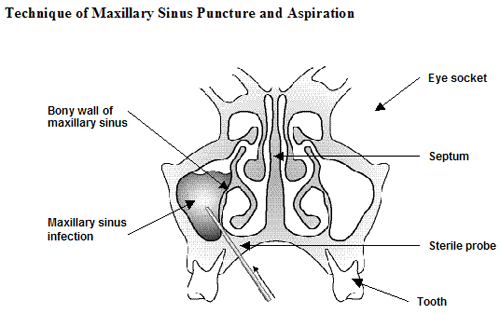Viral Infections
A viral upper respiratory infection (common cold) usually precedes acute bacterial sinusitis. In the United States, the average child has 6 - 8 acute viral upper respiratory infections a year. Adults usually have up to 2 - 3 per year. Ninety percent of acute viral upper respiratory infections show rapid changes in the paranasal sinuses when viewed through a
CT scan. These changes on CT may take up to 21 days to resolve. Acute viral upper respiratory infections have therefore been called acute rhinosinusitis due to disease being present in both the nose and sinus cavities. This term indicates the combination of swelling and inflammation in the nasal passages and the sinuses. It is estimated that more than 1 billion cases of viral upper respiratory infections occur in the United States each year.
If you have an acute viral upper respiratory infection, it is likely that you will experience a combination of symptoms. These include:
- Sneezing
- Runny nose
- Nasal congestion
- Decreased sense of smell
- Facial pressure
- Post nasal drip
- Sore throat
- Cough
- Ear fullness
- Fever
- Joint aches
Contrary to popular belief, a change in the color of nasal discharge is not an absolute sign of bacterial infection. Color change may occur several days after the onset of a viral illness. Color change of mucus is caused by the influx of white blood cells (infection fighting cells) from the blood into the nose.
The point at which a viral upper respiratory infection combines with bacterial infection (acute bacterial sinusitis) can be determined precisely by a technique known as a sinus puncture and aspiration. This procedure involves passing a sterile probe through a puncture made in the bony wall of the sinuses. The sinuses are then rinsed with sterile water. Fluid is then removed (aspiration) and cultured for bacteria and/or fungi. Instead of a needle aspiration, ENT physicians may use a rigid endoscope in the office to obtain a nasal or sinus culture. Properly done, this technique approximates the sensitivity and value of a surgical aspiration. Aspiration of the sinus is usually used for research or in unusual cases because of the discomfort and potential for complications.
